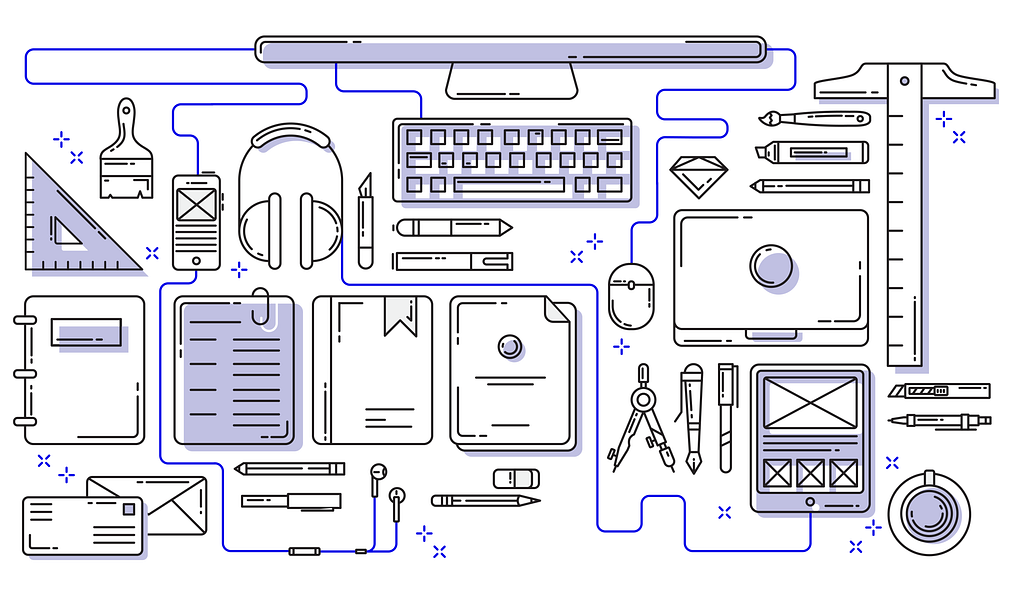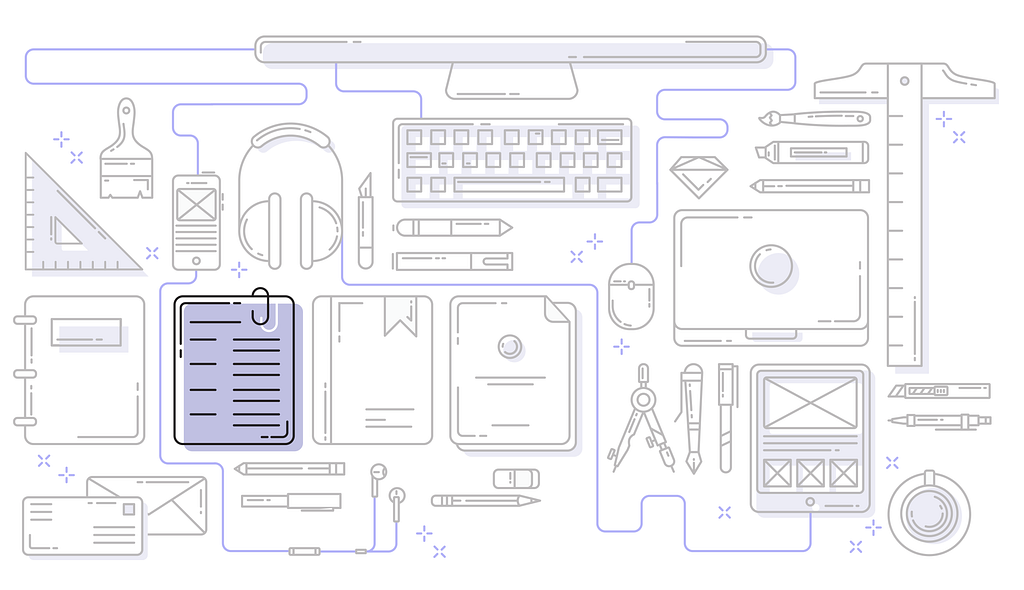Build Design Systems With Penpot Components
Penpot's new component system for building scalable design systems, emphasizing designer-developer collaboration.

uxdesign.cc – User Experience Design — Medium | Eytan Davidovits
 Illustrations by Carrie Curtin
Illustrations by Carrie Curtin
I’ve broken this topic into two posts. This is Part 1, with Part 2 (Nailing the Interview) coming soon.
Product design is a tough field to break into. There’s no “rulebook” that spells out how to be a good designer. When I was looking for my first full-time role two years ago, I remember the struggle getting my foot in the door. As I’ve become involved in recruiting efforts at Flexport, I consistently see small mistakes that immediately affect a candidate’s chance at getting hired. Here are some tips that I have learned along the way.

You should have one. It is one of the most important components of your “brand.” Your portfolio site showcases your design work. It should be simple: a quick intro about you and your current role, your work, and link to your other online presences. Recruiters/hiring managers go through hundreds of portfolios. Grab their attention by putting the most important information and projects first.
I use Semplice for my portfolio — it’s robust and easy to use. I would recommend it over Squarespace.
Be descriptive and clear, but don’t write a novel.
3. About Page: a chance to share more about yourself and a link to your resume.
4. Passion Projects (Optional): an extra page dedicated to anything you want people to know about you — photography, writing, calligraphy, other work that doesn’t fit.
*This is what I’ve seen that works well, but don’t feel obligated to follow this word for word.
Do: put your strongest work first — people tend to only click on the first projects.
Do: make your portfolio as simple as possible. It shouldn’t take more than 1 click to get anywhere.
Do: add some personal touches. A portfolio should be memorable, but not over-the-top.
Don’t: use your homepage to put photos of yourself and your cat. (I’d go so far as to say remove all photos of yourself)

Your resume is your one chance to design something that won’t shift from screen to screen, so invest the time to get it right. It should allow someone to quickly review your work experience, education, and contact info. Personally, I will open a resume just to see how it is designed, even if I can see a candidate’s background on linkedin.
Your portfolio site and resume — the bare minimum to apply — should be one cohesive unit. Brand yourself (typography, colors and style) and use it everywhere.
*These can be in any order.
Do: make your resume mistake-free and easy to read.
Do: make sure it has appropriate margins and contrast, so it can print well.
Don’t: put your design skills — if you’re a designer, I expect you know visual design.
Don’t: use a template. If you can’t design your own resume, it reflects poorly on you as a designer.

This is an optional piece that I mention because it was asked of me early on. This is used to present your work visually and condense it into a single file. This can be useful when you email design managers about available positions because you can attach it to your email along with your resume. It lowers the barrier to entry for seeing your work. I made mine using Adobe InDesign.
*Again, open to interpretation.
Do: include page numbers and make sure the images are not blurry.
Do: choose your best work.
Don’t: put as much text as you have in your portfolio site.
Stay tuned for the second part of this series.
Thanks to David Mostovoy, Andrew Kaye and Andrew Coyle for editing help. If you liked this post, please hit the green heart below!
I’m a product designer at Flexport, helping to build the operating system for global trade. We’re hiring designers!
Say hello! Or follow me on Twitter or Medium.

Setting yourself up to interview was originally published in uxdesign.cc on Medium, where people are continuing the conversation by highlighting and responding to this story.
AI-driven updates, curated by humans and hand-edited for the Prototypr community